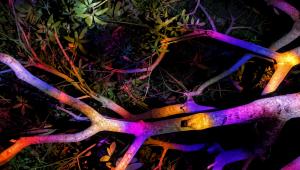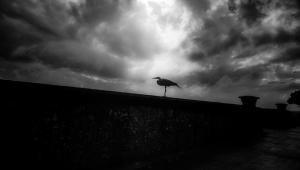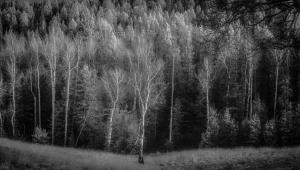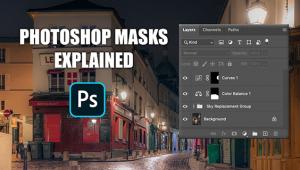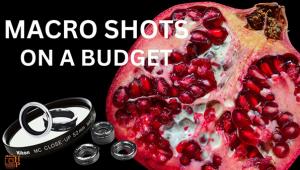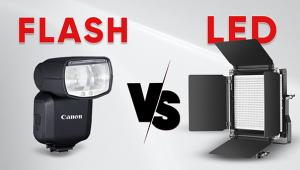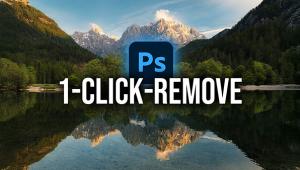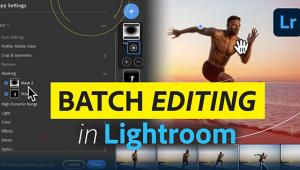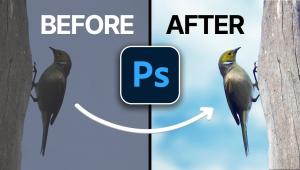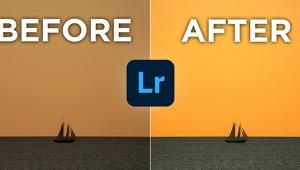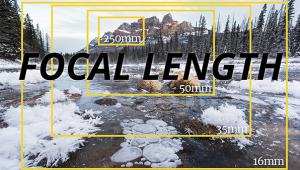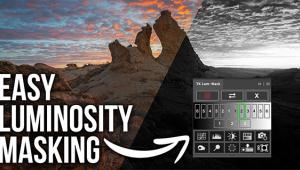Digital Help
Q&A For Digital Photography
Digital Help is designed to aid you in getting the most from your digital photography, printing, scanning, and image creation. Each month, David Brooks provides solutions to problems you might encounter with matters such as color calibration and management, digital printer and scanner settings, and working with digital photographic images with many different kinds of cameras and software. All questions sent to him will be answered with the most appropriate information he can access and provide. However, not all questions and answers will appear in this department. Readers can send questions to David Brooks addressed to Shutterbug magazine, through the Shutterbug website (www.shutterbug.com), directly via e-mail to: editorial@shutterbug.com or goofotografx@gmail.com or by US Mail to: David Brooks, PO Box 2830, Lompoc, CA 93438.
To aid us in making Digital Help as helpful as possible, please be specific in your query and include components, including software, that you use. David says, “Make me guess the problem and I might guess wrong.”—Editor
Your Vision Adapts—Computers Can’t
Q. I am color matching to make prints, working on a PC and using a Windows XP system. Would it be more appropriate to work in a completely dark room? I could cover the windows with black so I’m not getting any ambient light.
Geri
via e-mail
A. Having any amount of daylight in a lab, with its variable brightness or color balance, is not advisable as it introduces an inconsistency, so your results will not be consistent. My lab is a spare bedroom with a north-facing window that is shuttered and lets in very little light. Illumination is provided by simple, small fluorescent lamps placed behind the computer screens, with no light shining directly on the screens, but enough overall to see everything in the lab clearly. The LCD displays have hoods so no light reaches the screens themselves. It’s nothing fancy or costly, and it works fine. I use a separate computer in my office with the LCD set at 120.0 CD/m2 to do my business work.
Reproduced Color Variations
Q. Over the last couple of years the subject of having digital images print out too dark has been thoroughly discussed with recommendations on how to eliminate it. How about a different twist to the problem, with prints being too light and just plain flat? Let me explain. Recently I received the latest issue of a scenic magazine that I subscribe to. (Don’t worry, I also get Shutterbug and always read your column.) What surprised me was that quite a few pictures in this scenic magazine were printed way too light with colors inaccurately represented, making the images unrealistic. I’m sure the editor first saw these images when submitted and they looked great. Why should things go astray during the publishing process for only some of them? Is this simply just another different type of issue with the monitor luminance settings that somehow crept in?
I also belong to a local camera club where we have scheduled digital projection competitions. Typically about 130 images are projected and judged during the long evening. Some of these images are extremely well processed with great color depth and sharpness. Others are flat in color, too light, and look totally unrealistic as an image. Could these lower-quality images be suffering the same problem that I found in the magazine?
Doug Bacso
via e-mail
A. Regarding the first part, magazines are printed on extremely fast and huge offset presses. The pressmen have to monitor and adjust these web presses constantly and sometimes they miss so the ink is printing too lightly or too heavily. Having worked in magazines off and on over the last 35 years, I have seen this fairly often, even though most of the printing is well controlled and accurate, at least most of the time.
With individually made photo prints, lightness or darkness is due more to variations in individual perception. People just see images differently because there is no standard. Human vision and perception varies a lot, much more than each of us realizes, because we only know what we see ourselves and cannot see as others do.
Finding The Best Photo Software
Q. I own Photoshop CS4 and have used Photoshop for the last 15 years for some graphic design work totally unrelated to photography. From my standpoint, it is a nightmare as it’s way too complex for my digital photographic needs. As you suggest, Adobe should add different shaped brushes to Lightroom and Nik should do the same for its various programs. With respect to Lightroom, I would be happy to pay Adobe double or three times the amount for each upgrade for better editing features in Lightroom. I suspect there are many photographers who agree with me. At least we are getting much improved noise reduction features in Lightroom 3. What are your thoughts?
Jack Siegel
via e-mail
A. I use Photoshop CS4 but for only two very particular purposes and that use involves very few tools: (1) to tweak images to get densities and color right to make color managed prints and (2) to do retouching, which after having done studio work in Hollywood for 30 years provided a large library of pretty people pictures that, to be right, often need more than a bit of retouching. Otherwise to edit, color correct, and process D-SLR images and scan files, I use LaserSoft’s SilverFast almost entirely.
Calibrating And Profiling The Display
Q. Between you and me, I saw little difference in results after using calibration software for my display. Is this normal?
Wade Shanley
via e-mail
A. When a display is measured, calibrated, and profiled, the resulting data becomes a part of your computer’s operating system. Then, and only then, will your computer and any application installed know what you are seeing, specifically and objectively. Otherwise, an operating system is blind to what shade or tint of red, blue, or green is actually displayed and what the user is seeing.
Home Computers Are Not Ideal For Digital Photography
Q. Based on your recommendations, I purchased the NEC MultiSync P221W-BK-SV 22” LCD display (TFT, widescreen) with SpectraView II color calibration solution and connected it to my main computer. I also connected my Dell 20” monitor to this computer so I can use both monitors in sync with Photoshop and other applications. The Dell monitor is also connected to my Dell computer. So I use the Dell monitor with both computers, but the NEC/Dell monitor combination only with the main computer.
Given that the SpectraView II calibration system works only with the NEC monitor, my question is, what would you recommend for calibration of my Dell computer—Spyder3Express, Elite, Pro or some other brand/system?
Is it possible to somehow calibrate the Dell monitor so that it matches the NEC monitor when I’m using both together with the main computer, but also gives true color when working solely with the Dell computer? As you can see, I’m rather confused about this.
Finally, can you recommend a book or other learning tool that deals with color calibration/profiling of monitor/computer, printer, scanner, and camera? Getting all these devices to match one another is vexing me. And suggestions would be much appreciated.
Ron Thoman
via e-mail
A. First of all, I would not particularly recommend trying to use a home/office Dell display in conjunction with the NEC display because there is no way the two can be brought even close to a match in either color or brightness. Home/office LCD displays will not work satisfactorily at a white luminance of 90.0 CD/m2; about as low as most will go and function decently is 120.0 to 140.0 CD/m2. As a result, a photo image adjusted to look the right brightness will print between a half to a full f/stop too dark. Second, the NEC reproduces over 95 percent of Adobe RGB color while home/office displays only reproduce 30 percent or less of a color range, close to sRGB.
Yes, the Datacolor Spyder3Express would be a good system for the Dell, but the current version does not help adjusting the screen brightness white luminance level.
You cannot come anywhere close trying to match a Dell home/office LCD to the NEC either in color or brightness that matches paper white. It is not that I am being an elitist, but most computers are not made to do graphics and photography—they are made for home and office computing. So don’t even try or assume you can use a graphics setup in conjunction with a Dell office computer. They can’t be matched. It’s a Mutt and Jeff problem, one is tall, the other is short.
If you will go to my website (https://sites.google.com/site/davidbrooksfotografx/), you can see a list of what is included in my eBook on a CD for a very modest cost. And please compare it with a very good selection of books on digital photography and color management listed by Amazon.com.
Are Wess Plastic Slide Mounts Still Available?
Q. I have looked all over for the Wess plastic full-frame professional slide mounts you mentioned you use for scanning 35mm film. Can you still get them and, if so, where?
Burgess Peterson
via e-mail
A. I was wondering the same thing recently, so I checked my address book and found the phone number I had (631-981-4850) was still good and I was able to order 10 boxes of the large aperture AGX500K mounts I have used for years. They were delivered quickly and I find them to be just what I am used to. I also noticed on the packaging a BCA Manufacturing company name. And it has a www.wessmounts.net website URL with the following information: “BCA Manufacturing is now producing much of the Wess Mount line of Products for the Creative Imagemaker. Items are being stocked and are sold directly from the factory in Melville, NY, USA. To place an order or for information call USA 631-981-4850, fax 631-981-4852 or e-mail bwessinger@bcamfg.com.”
Get What Is Needed—No More, No Less
Q. Based on your input, I’m waffling between a Mac Pro laptop and desktop. The Apple service seems great, based on your feedback. You have been successful in converting me to the Apple platform for my photo work. I guess it is just not feasible to color correct on other platforms. I’m a believer in using what works, as it takes significant time to produce quality work. What about the RIP software? Is it overkill or required?
Glenn Incorvia
via e-mail
A. With today’s computers a RIP (Raster Image Processor) is not needed except for very large prints. I was driving a 17” printer, sending it 16-bit files directly, and the printer handled and printed the material without any slowing down from processing so much data.
What Local Stores Carry
Q. I’m investigating getting a new printer to replace my old HP. I’m trying to decide between an Epson and a Canon. I doubt I would often use the 13x19” size they can produce, but want the printer that can deliver the best color picture quality. I can deal with a slower printing speed if one or the other is not as fast; it’s really not an issue. But I live in Texas and the Canon paper, as well as the ink, is more difficult to find. Which printer costs the least to use in terms of ink and paper cost?
Bill Atkinsen
via e-mail
A. I would not like to recommend one over the other between Epson and Canon printers. I used a Canon for a while and was very satisfied with the print quality and now I am using an Epson R1900 and the difference, if any, is slight to none at all. Like you, a good selection of Epson and Canon ink and paper is not available where I live (I would have to drive 50 miles there and back again to buy it at a store). But both Canon and Epson sell paper and ink directly and my orders are large enough so shipping is included in the cost. I just ordered ink, and it was quicker and easier to do than with any store service I’ve experienced. Over a lot of years of printing, I have never found that either Canon or Epson costs less or more significantly in either ink or paper, although the selection of papers varies between the two companies somewhat.
ANNOUNCEMENT
I am pleased to announce a new Fourth Edition, adding four chapters to my eBook DIGITAL DARKROOM RESOURCE CD. The CD now contains 30 chapters totaling 359 pages in Adobe Acrobat .PDF format, providing easy-to-read text and large high-quality illustration. The CD is available for $20 plus $4 shipping and handling (US Mail if available). Ordering is as simple as sending a check or money order for $24 made out to me, David B. Brooks, and mailed to PO Box 2830, Lompoc, CA 93438.
- Log in or register to post comments










